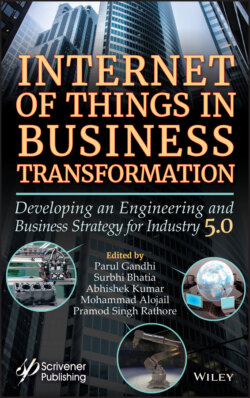Читать книгу Internet of Things in Business Transformation - Группа авторов - Страница 35
3.4 Implementation Steps
ОглавлениеOur algorithm consists of two parts. The first part is network creation part, where we specify the basic parameters. Our network is a grid of 1 km × 1 km in size. We specified the transmission ranges from 2, 4, 6, 8, 10 and alternatively we run it with number of nodes from 50, 100, 200, 250, and 300. Network creation part randomly deploys the nodes on the grid. Once the network is created, Evolutionary algorithms start to find optimum clusters. In our experimentation, we used three algorithms,
Comprehensive Learning Particle Swarm Optimization (CLPSO)
Dragonfly Algorithm (DA)
Multi-objective particle swarm optimization (MOPSO).
The best cluster head is one who increases network efficiency and network lifetime. Selection can be performed based on defined parameters. To find the optimum solution we consider, the current fitness value of each node in comparison with the new fitness value, if the current value is better than the previous one, the old value is replaced by a new one, otherwise stays same. Figure 3.4 is presenting the flow of proposed scheme. Table 3.1 is describing defined simulation parameters.
Figure 3.4 Primitive corrective patterns between dragonfly.
Table 3.1 Simulation parameters.
| Parameters | Values |
|---|---|
| Population size | 100 |
| Maximum iterations | 150 |
| Lower bound (lb) | 0 |
| Upper bound (ub) | 100 |
| Dimensions | 2 |
| Transmission range (m) | 2, 4, 6, 8, 10 |
| Nodes | 50, 100, 150, 200, 250, 300 |
| Mobility model | Freely mobility model |
| W1 | 0.5 |
| W2 | 0.5 |
